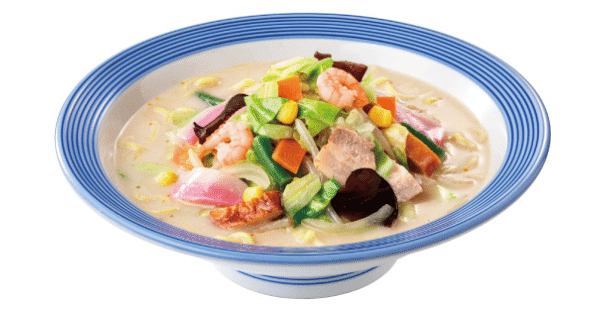
Mystical Nagasaki: A Journey Through Yokai Legends and Culinary Delights
Inbound travel to Japan is flourishing once again. Tourists from all around the world are flocking to Japan in search of its unique culture, culinary delights, beautiful nature, and historical landmarks.
Popular attractions such as the World Heritage site Shirakawago, Disneyland, and skiing in Hokkaido represent just a fraction of Japan's charm. Of course, Japan's KAWAII culture, anime, and manga are already well-known internationally.
Among these, my hometown of Nagasaki Prefecture, with its rich nature and unique history, has cultivated a distinctly Japanese culture. This time, we aim to focus not only on introducing tourist spots but also on the mystical world of "Yokai" - mysterious creatures that pervade Japanese folklore. Known for their whimsical interference in human affairs and sometimes providing lessons, Yokai are an integral part of local culture and history in Nagasaki.
We want visitors to Japan to dive deeper into these stories and traditions, to gain a more profound understanding of Japanese culture. When visiting Nagasaki, you can do more than just tour historical sites; you can listen to the tales of Yokai that are woven into the fabric of the area, learning how these legends are cherished by the local people. This offers a fantastic opportunity to experience and understand the diversity of Japanese culture.
We aim to provide more than just a visit to tourist locations; we want to offer a gateway to experiencing and understanding the depth of Japanese culture and traditions. This way, every visit can lead to discoveries and experiences.
The Legend of the Noh Mask Woman in Nagasaki
Among the myriad urban legends and ghost stories of Japan, the tale of the "Noh Mask Woman" stands out, particularly in the Kyushu region, with a significant focus around Sasebo City in Nagasaki Prefecture. This ghost or Yokai is depicted as a woman with a flat, expressionless face resembling a traditional Noh mask. Variations of her story abound, but one common version goes as follows:

As the legend goes, while walking on a deserted night road, one might hear a voice from behind asking, "What do you think of my face?" Turning around, they'd be faced with a woman whose features are as blank and unyielding as a Noh mask. The outcome of this encounter largely depends on the response, but it typically ends in a terrifying conclusion.
Characteristics of the Noh Mask Woman:
- Expressionless: Her most striking feature is her flat, emotionless face, reminiscent of a Noh mask, showcasing no trace of sentiment or humanity.
- Sudden Appearances: She is known to approach individuals walking alone at night, suddenly asking them from behind.
- Fateful Question:The way one responds to her question, "What do you think of my face?" is believed to determine their fate.
Cultural Background:
The tale of the Noh Mask Woman encompasses elements common to many Japanese ghost and Yokai stories. Her expressionless visage, while devoid of emotion, taps into the viewer's inner fears and the traditional Japanese aesthetic value of hidden sentiments. Such urban legends can be interpreted as symbolic representations of everyday anxieties and fears.
This story, part of Japan's rich oral tradition, has evolved through various iterations, particularly cherished in the area around Sasebo. The origins and transformations of this legend are unclear, but today, it thrives as a haunting urban legend and ghost story, passed down through generations. The Noh Mask Woman's narrative, with its eerie blend of cultural beauty and latent terror, continues to fascinate and unsettle, marking its place in Japan's collective imagination.
Nagasaki's Cuisine and Festivals
Nagasaki, with its distinct history, culture, and natural environment, has given rise to a diverse range of culinary traditions and festivals. Dishes like Nagasaki Champon and Sara Udon, Castella, and Turkish Rice are unique to the area, having been influenced by foreign cultures and beloved by tourists. Traditional local festivals like Nagasaki Kunchi and the Nagasaki Lantern Festival serve as valuable opportunities to convey the area's history and culture to the present day.
Nagasaki Champon & Sara Udon: Champon is a hearty noodle soup loaded with vegetables, seafood, and pork, while Sara Udon features crispy noodles topped with a similar mix in a thick sauce. These dishes are staple foods in Nagasaki and a must-try for international visitors.


Castella: Introduced by the Portuguese, Castella is a popular sponge cake in Nagasaki, known for its fluffy texture and sweetness, making it an ideal souvenir.

Turkish Rice: A unique dish that combines curry rice, spaghetti, and a pork cutlet on a single plate, reflecting Nagasaki's multicultural influences.

Festivals in Nagasaki
Nagasaki Kunchi: Nagasaki's largest annual festival in October, showcasing elaborate dances and performances influenced by Portuguese, Chinese, and Dutch cultures, highlighting Nagasaki's international history.

Nagasaki Lantern Festival: Celebrating the Chinese New Year, the city is adorned with around 15,000 colourful lanterns, with various events that captivate visitors, showcasing the strong influence of Chinese culture in Nagasaki.

These culinary traditions and festivals offer a fantastic opportunity to experience the diverse culture and charm of Nagasaki. For international tourists, these experiences can be the highlight of their visit to Nagasaki.
Japan is like a vast theme park, filled with diverse attractions across its 47 prefectures. From Hokkaido to Okinawa, the country offers a range of climates and cultures, ensuring that every visit brings new discoveries. We look forward to introducing more of Japan's unique features, including Yokai from various prefectures.
Keep following along as we continue to explore the enchanting wonders of Japan.
この記事が気に入ったらサポートをしてみませんか?
